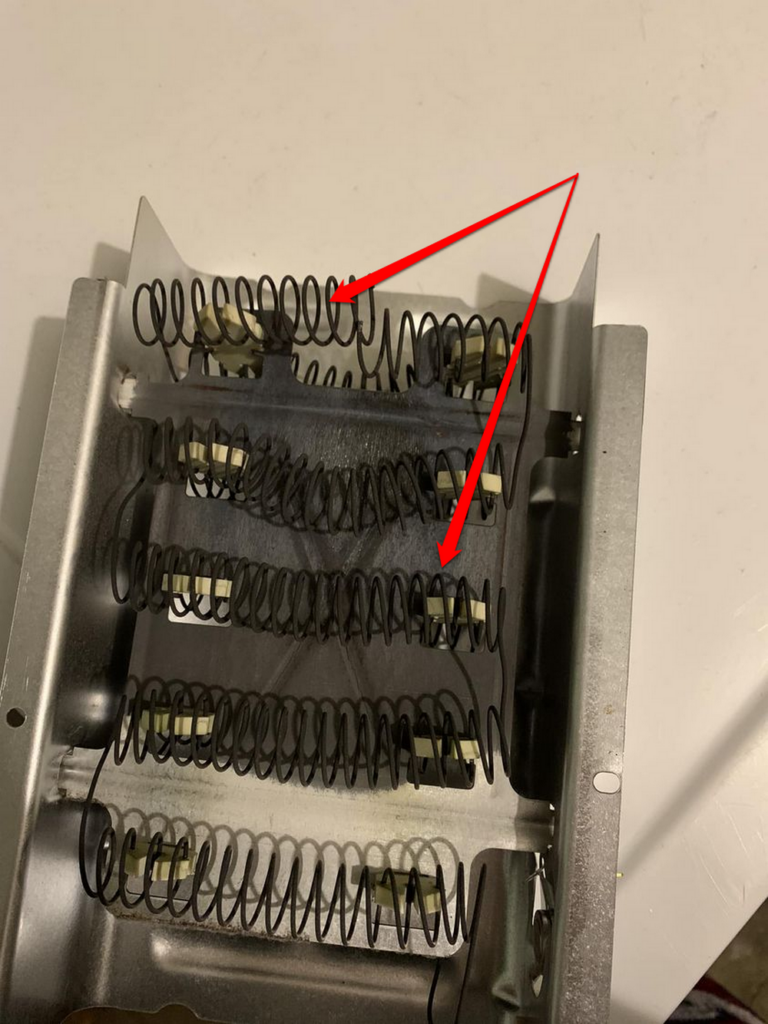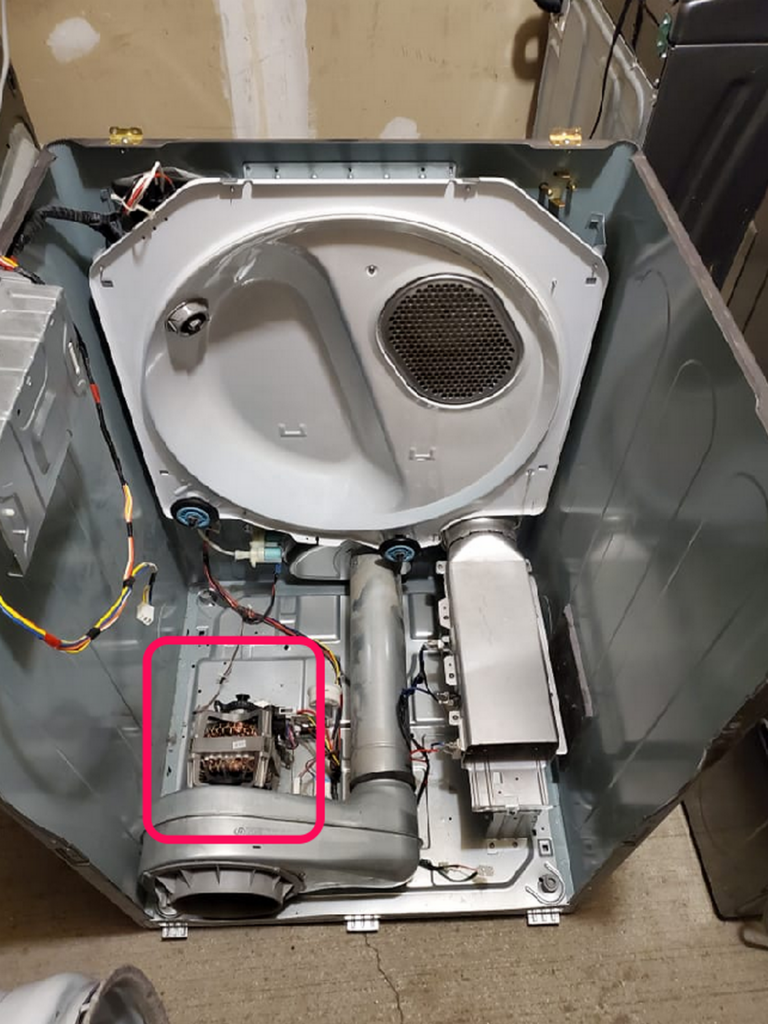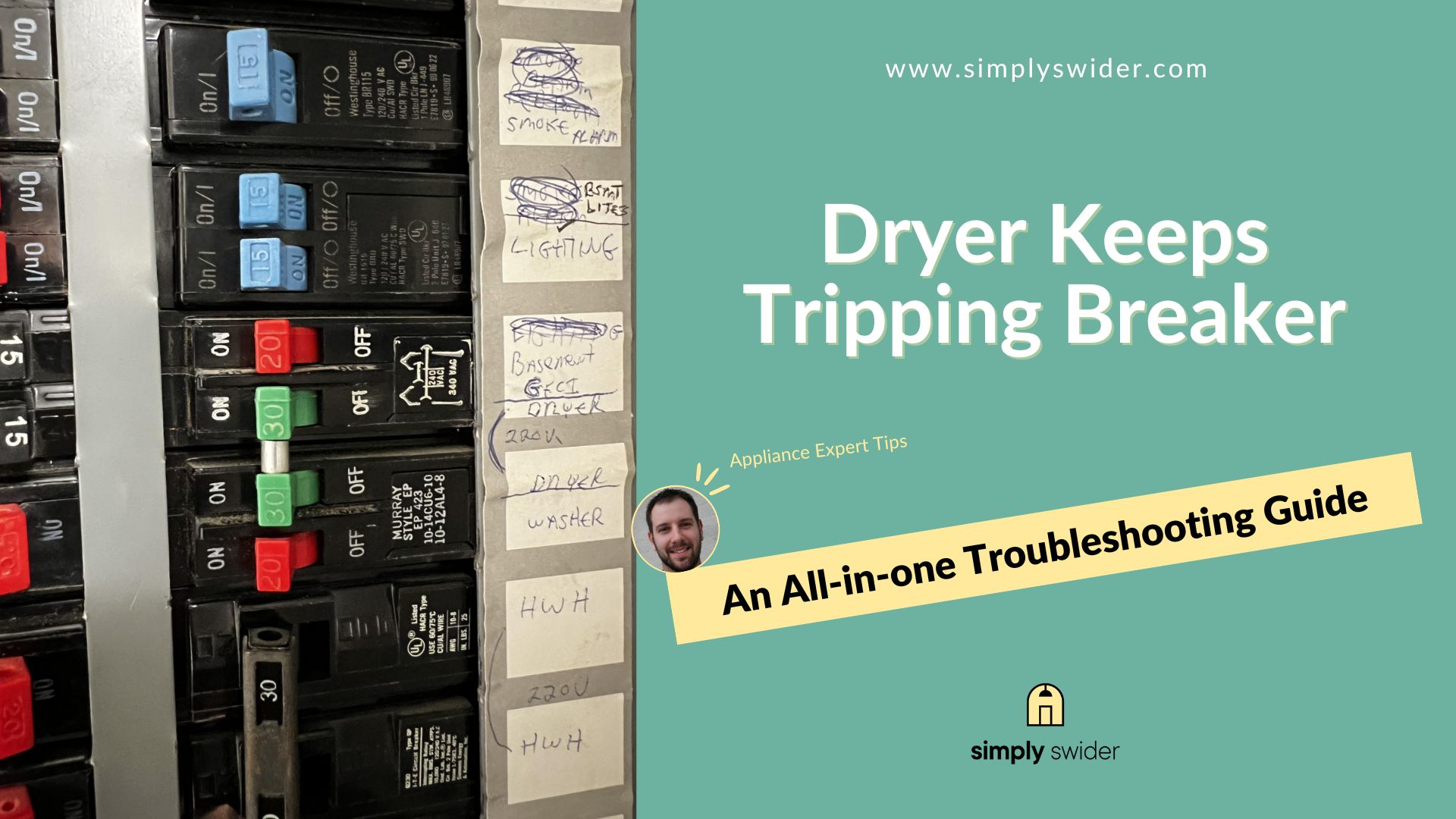Understand this:
A circuit breaker exists to restrict the flow of electricity in the event of an electrical mishap that could damage your home’s circuit.
So, if your dryer keeps tripping your circuit breaker, it is important to trace the causative fault.
And I can help you with that.
Additionally, I’ve invited Jordan Smith, an appliance technician and qualified electrician from Tampa, Florida, to weigh in on this topic.
With our combined technical experience of roughly 20 years, we will do our best to break down this issue. Let’s get to it.

Table of Contents
Why Your Dryer Keeps Tripping the Circuit Breaker
If your dryer keeps tripping the circuit breaker, it is likely due to a few common causes. These include but aren’t limited to an overloaded or weak circuit, loose or incorrect wiring in the terminal block, a clogged dryer vent, or a damaged heating element. And in the worst-case scenario, a malfunctioning drive motor could trip your dryer’s circuit breaker.
Subsequently:
You will learn more about these possible causes and their respective troubleshooting solutions.
To that end, disconnect the power supply, wear the appropriate apparel, and let’s get fixing!
5 Common Reasons and Troubleshooting Steps for a Dryer that Keeps Tripping the Circuit Breaker
| COMMONLY AFFECTED PARTS | ESTIMATED COST |
|---|---|
| Circuit breaker | $15 – $120 |
| Terminal block | $10 – $60 |
| Heating element | $17 – $72 |
| Drive motor | $60 – $200 |
1. Overloaded or Weak Circuit Breaker
| Part | Circuit breaker |
| Location | It is located in the electrical panel or breaker box. It cannot be found inside the dryer. |
| Ease of troubleshooting | Moderate |
| Cost | $15 – $120 |
| Repairable | Yes – if it is overloaded or tripped. |

Here’s the thing:
Because of the significant electrical current needed to heat a dryer, they require up to 240 volts to function.
For most dryers, this typically means they need a 30-amp circuit breaker.
As such:
It is important that your dryer does not share a circuit with other high-power appliances.
Having a dedicated circuit for your dryer provides sufficient power without overloading the circuit.
Alternatively:
Jordan suggests the circuit breaker might not be strong enough to support the electrical current from the dryer.
He adds, “Like all electrical parts, the circuit breaker is also prone to wear, which could lower its amperage rating.”
Here’s what this Reddit user experienced:
His Samsung dryer kept tripping the circuit breaker after running for 10 minutes.
When he called a Samsung service technician, he was advised that the dryer required a double 30-amp breaker and suggested he replacethe existing breaker.
So:
If your dryer keeps tripping the circuit breaker, you should test the breaker with an amperage meter while the machine is running.
If the reading is below 30-amps, I suggest you have an electrician replace the circuit breaker with one that has the necessary amperage.
Note that:
Depending on your dryer’s specifications, the amperage requirement may vary. To that end, you must refer to your manual or nameplate for the accurate requirement.
2. Loose or Incorrect Wiring in the Terminal Block
| Part | Terminal block |
| Location | It is positioned at the back of the dryer, where the power cord connects to the internal wiring. |
| Ease of troubleshooting | Moderate |
| Cost | $10 – $60 |
| Repairable | Yes – if the wiring is loose or incorrectly attached. |

Get this:
Every electric dryer has a string of wires connected to the terminal block at its rear. If the wires are loose, incorrectly attached, or damaged, your dryer could frequently trip the breaker.
You see:
Loose wires could arc, causing damage to a part of the terminal block.
As a result, the wires could form short circuits or come in contact with the dryer’s metal frame causing the circuit breaker to trip consistently.
For instance:
This Reddit user complained that his Speed Queen dryer kept tripping the circuit breaker. Other users suggested that the screws and wiring were incorrect.
In response to that:
Jordan agrees with the other users and recommends reorganizing the wires appropriately by detaching the ground strap from the neutral terminal.
In his words:
“If you’re experiencing similar symptoms, examine your terminal blockand the connected wires. Then, tighten, reconnect, or replace wires where necessary.”
This should stop your dryer from tripping the breaker.
3. Clogged Dryer Vent


| Part | Dryer vent |
| Location | It is situated behind the dryer and runs through the wall outside. |
| Ease of troubleshooting | Easy |
| Cost | $100 – $200 for professional cleaning |
| Repairable | Yes – if it is clogged |
Now:
The dryer vent removes bye products of the drying cycle, including excess heat, moisture, and lint.
Over time, the dryer vent may become clogged with lint buildup causing the dryer to overheat and trip off the breaker.
Look:
A member of our Facebook community recently made a post concerning his Kenmore electric dryer, which kept overheating and tripping the circuit breaker.
He claimed that when he checked the vent, it was full of lint, and after he cleaned it out, the problem was rectified.
As such:
It is sufficient to say that you must regularly clean out your dryer vent to clear any blockages.
In addition, Jordan suggests having it professionally cleaned once or twice annually for a more thorough result.
However:
If you decide to DIY, begin by unplugging your dryer.
Then, use a vent brush to clean out the vent, ensuring you eliminate any lint buildup or other debris obstructions that could hinder airflow.
4. Damaged Heating Element


| Part | Heating element |
| Location | It is typically found inside the dryer’s heater housing behind the front or rear panel. |
| Ease of troubleshooting | Moderate |
| Cost | $17 – $72 |
| Repairable | No – if it is damaged |
Fact:
The heating element is designed to heat the air circulating through the drum to dry your clothes.
A damaged heating element could damage the heater housing and assembly, causing the circuit breaker to trip.
Take it from this Reddit user:
Their electric dryer trips the circuit breaker as soon as it is plugged in. They also checked the start switch for electrical continuity, which was positive.
In response:
Another user suggested inspecting the heating element and the housing for signs of damage. And I agree with that suggestion.
You see:
To confirm, you must disconnect the access panels, locate the heating element, and use a multimeter to test its terminals.
If they lack continuity, the heating element would have to be replaced.
Jordan adds:
“Another sign that the heating element is damaged would be a lack of heat in the drum.”
This happened to a Simply Swider reader, Thomas, who reached out complaining about his GE electric dryer that wasn’t heating and tripping the breaker.
Ultimately:
He replaced the heating element and resolved the problem.
5. Malfunctioning Drive Motor


| Part | Drive motor |
| Location | It can be found at the bottom of the dryer, accessible through the front, top, or rear panel. |
| Ease of troubleshooting | Difficult |
| Cost | $60 – $200 |
| Repairable | No |
Listen:
You should consider a failing drive motor if all these other repairs don’t do the trick.
Because the drive motor provides the rotational force necessary to turn the drum, it could internally short out when it malfunctions. And this could cause the breaker to trip.
Here’s what I mean:
This Reddit user claimed their Whirlpool WED8300SW2 Duet dryer kept tripping the breaker after running for a few minutes. They further confirmed that they had already replaced the heating element and thermostat to no avail.
To this:
Another user suggested that the motor could be having trouble operating. Bear in mind that this user’s suggestion seems fair only after going through all the other possible causes.
In any case:
You must confirm by detaching the access panels, locating the drive motor, and testing it for continuity with a multimeter.
If the results denote shorted-out motor windings, you have your culprit and must replace it to solve the problem.
Jordan adds:
“If you use a Whirlpool dryer, their online parts store is great for purchasing a genuine replacement drive motor. However, if the one-year warranty covers your dryer, it’s your lucky day, and you’ll get it for free.”
Conclusion
At the end of the day:
If your dryer keeps tripping the circuit breaker, it requires immediate attention to prevent further electrical faults.
As such, you must troubleshoot the underlying cause of this defect as soon as you determine what it is.
In line with that:
Here are some common challenges to consider:
- Overloaded or weak circuit breaker
- Loose or incorrect wiring in the terminal block
- Clogged dryer vent
- Damaged heating element
- Malfunctioning drive motor
You see:
Often, all you need is a basic cleanse, repair, or DIY replacement to solve the problem.
However, if troubleshooting gets complicated, you can solicit help using our “Ask the Expert“ feature.
In addition:
Jordan believes that regular maintenance is the best avoidance hack.
He says:
“You will save yourself a lot of trouble by consistently examining your dryer for faults and cleaning up buildup.”
Finally:
Please keep me informed on your troubleshooting process. I’ll be watching out for your input in the comment section below.
Frequently Asked Questions
To prevent your dryer from tripping the circuit breaker, you must ensure it isn’t sharing a circuit with other high-power appliances. Also, it would help if you cleaned the vent regularly to avoid overheating.
A tripped circuit breaker will have the switch in the position labelled “off.” Push the switch towards the “on” position to reset your tripped breaker.
Yes. Your dryer should have a dedicated circuit with the appropriate amperage reading. Experienced electricians recommend splitting the electrical load from high-power appliances among multiple circuits to avoid overloading the breaker.

